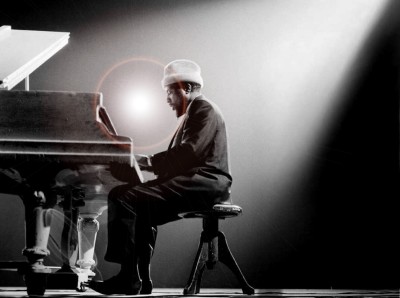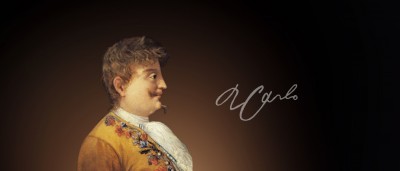The Origins of Baroque Music and Style
It is thought that the Baroque Style emanated from Italian painters like Annibale Carracci and Caravaggio. Caravaggio experimented with dramatic contrasts in light and dark, on top of depicting religious scenes in everyday settings like taverns and the streets. The Baroque painter Artemisia Gentileschi is recognized today as one of the most accomplished Italian Baroque painters. Her exceptional technical skill is in the style of Caravaggio. At the same time in the Netherlands Peter Paul Rubens and his colleagues were moving away from purely religious paintings towards a more domestic trend, while using the same techniques and fascination with light as their Italian counterparts.
In the world of Baroque sculpture, groups of figures would show a dynamic energy or movement. The work of the great Italian artist Giovanni Lorenzo Bernini dominated as a dramatic counterpart to the contemplative renaissance style, which reigned supreme a few years earlier. His sculptures feature a higher degree of movement and violent unrestrained emotion.
Baroque architecture valued movement and fluidity between interior and exterior, the appearance of complex domes and curving walls. It was initially introduced by the Jesuits of Catholic Church as a means to combat the Reformation and the Protestant Church with a new architectural style that inspired surprise and awe.
Baroque literature produced several major works during this period, with the Spaniard Miguel de Cervantes masterpiece Don Quixote de la Mancha coming to mind as a perfect example of Baroque polar opposites, a major aesthetic ideal in every art. This is exemplified in the novel through the personalities of its main characters, the down to earth and pragmatic Sancho, standing in stark contrast with the spiritual and idealist Don Quixote.
The Emergence of the Baroque Music Genre
In the realm of Baroque music, the period began to gestate in the late 16th century in a few Italian cities. Thanks to their political independence and economic diversity, these cities developed several unique and individual musical styles, which diverged greatly from the classical ideals of late renaissance, as cultivated in the works of Palestrina and Di Lasso. Amongst these cities, the two which are worth mentioning the most, are the cultural and political centers of Venice and Florence.
In Venice, the church of St. Mark served as the geographical setting for the development of Giovanni Gabrielli’s polychoral music. This style was based on the principle of having several spatially separated choirs with voices and instruments, which, when performing at the same time, required simpler homorhythmic chordal textures, greatly diverging in conception from the ideal of the complex imitative polyphony of the late renaissance.
Around the same time in Florence, a group of intellectuals, humanists and artists known as the Florentine Camerata, sought to emulate the ideals of classical Greek drama, in which words and music were married, but differently from renaissance madrigals. The musical setting should not interfere with the natural spoken inflections of text and the words should be expressed as clearly as possible. To accompany this new musical conception, the complex contrapuntal nature of the renaissance motet and madrigal was not suitable and was replaced with a simple chordal texture produced by instruments which wouldn’t interfere with the text. These developments gave birth to a new singing style which was called monody, and became perhaps the single most important innovation of the Baroque music era.
The Birth of Baroque Opera Music
Around the beginning of the 17th century, the most important music genre to come out of the era was Baroque Opera. In a few words, this genre is essentially a Baroque music drama which is sung throughout its entire length. Incorporating the Florentine Camerata’s innovations on monody, a vocal style suitable to the setting of a full-length music drama was developed for the first time in history, and thus the first ever operas came into production. During this period, the Baroque music era’s first monumental figure achieved maturity, the great Claudio Monteverdi. Although some efforts to produce full length operas had already been undertaken in Florence, Monteverdi is credited with having composed the first great opera in history, a setting to a libretto (the text) based on the Greek myth of Orpheus. L’orfeo cultivated two distinct vocal styles based on monody, Recitative and Aria with instrumental accompaniment. Recitative style bears a close resemblance to actual spoken declamation and is most useful to present dialogue between characters and long sections of text to move the story forward. In contrast, the Aria closely resembles the dramatic soliloquies of theatre, in which the performer expresses emotion and reflection on the events of the drama which have affected its soul.
In France, towards the final decade of the 17th century, the Italian-born Baroque music composer Jean-Baptiste Lully adapted the Recitative and aria styles to the natural inflections and unique musicality of the French language, thus creating a national style of operatic works. Amongst other significant national schools, we can mention English Baroque music composers John Blow and Henry Purcell. By the final years of the 17th century, they had already developed a distinctly English style of opera sung in English, adapted from the ideals of the Florentine Camerata and following some of the fashionable French developments.
The Oratorio in Baroque Music
Another great vocal genre of the Baroque music period is the Oratorio, which, contrary to opera, always features a religious subject matter. Nevertheless, the two genres have many things in common, the most important being that both use Recitative and Aria styles of singing for text declamation. During this period, many composers wrote hundreds of oratorios, yet, perhaps none of them achieved such great heights as German-born composer Georg Friedrich Händel. His highly successful music career developed mostly in England, where he adapted to the changing economic times and therefore tastes of the public. Having begun his career as an Italian opera composer, Händel later made the change to the more lucrative genre of Oratorio. His efforts in both genres established him as a key figure in the history of stage music and an eternal place in the Olympus of composers.
The Influence of Bach on Baroque Music and Era
Perhaps the most influential Baroque music composer and musician of all time, Johann Sebastian Bach, was working nonstop in creating his enormous corpus of over two hundred Lutheran cantatas. This was another important vocal genre of the Baroque music period, which incorporated the classic elements of Lutheran rites like the chorale and the solo song, while also including novel developments like the recitative and Aria style of Italian origin.
Bach was born in the central German town of Eisenach in 1685, in the heart of a respected musical family. His life’s work was dedicated to music and the Lutheran church, of which he was a devout member and server. Four highly successful musician sons succeeded him and became major composers of the transition period into the classical era. Bach developed friendly relationships with several other composers of this era, namely, Georg Philipp Telemann, who became godfather to his son Carl Philipp Emanuel, and Dietrich Buxtehude. Buxtehude was a famous composer and organist whose virtuosity and compositive prowess motivated Bach to travel 200 miles by foot to meet him, eventually even performing with him. Bach’s sphere of influence is so wide that art historians generally acknowledge his death as a crucial event, which in 1750 caused the end of the Baroque period.
The Legacy of the Baroque Period
One of the major achievements of the baroque period was the establishment of instrumental music as a serious, independent and important means of musical expression. Many major Baroque music composers produced works which have achieved Olympian heights and entered the standard repertoire of several instruments. During the previous historical period, some composers had already begun to develop instrumental music, with instruments mostly serving as an accompaniment to the human voice, like in John Dowland’s lute songs.
During the Baroque music period, instrumental genres and styles underwent several major modifications. This was due to both the technical developments in the instruments’ construction and the appearance of great virtuosos who competed with each other, thus pushing the limits of what instruments were capable of doing. Famous episodes of such competitions were the few encounters between Domenico Scarlatti and Händel in the early days of the 18th century. The two composers undertook a friendly musical competition, with Scarlatti emerging victorious at the harpsichord and Händel at the organ.
The social changes of the times and the emergence of the public concert led to the lute’s popularity declining, with the harpsichord and organ taking its place and shifting composers’ interests towards keyboard instruments. This period was also a time in which several new instrumental genres were invented and greatly developed, amongst the most significant were the prelude, the chorale prelude, the fugue, the toccata, the suite, the sonata, the concerto, and the concerto Grosso.
Three Baroque genres are of particular importance to the development of some new and unique characteristics. The Baroque solo-concerto is a work for the orchestra and one solo instrument. It supplied a great medium to explore the effect of contrasting sonorities, different sound densities and the dramatic virtuosic passages for the soloist, which were attractive to both the public and the Baroque aesthetic. At the same time, another variant of the concerto developed, the Baroque concerto-Grosso. This form also featured an orchestra but instead of having an individual soloist, it featured a small group or ensemble of solo instruments which works as a unit.
Last but not least, the Baroque period also saw a profound change in the realm of chamber music for instruments. This includes the invention of the sonata for solo instrument and keyboard, which would end up becoming a major genre throughout the rest of the 19th and 20th centuries. The trio sonata featured two melodic lines and the accompaniment of the basso continuo, which actually consisted of a polyphonic instrument, like a harpsichord, as well as a melodic bass instrument that provided the bass line and the harmonic content.
Listen to Baroque Music on Calm Radio
The Baroque era spanned an enormous period of time, with approximately 150 years and thousands of works produced in many different styles, countries and genres. This has led many historians to question the level of accuracy of the term “Baroque” to englobe such divergent trends as Monteverdi’s L’orfeo and Bach’s St Matthew’s Passion.
At Calm Radio, our listeners love our Baroque music channels and the endless list of Baroque composers. From channels like Baroque Harpsichord, Organ, Lute, Violin and Cello, and composers like JS Bach, Händel, Buxtehude, Couperin, Scalatti and Vivaldi, all the Baroque music possible lives here.
Happy listening!
~
Listen to relaxing baroque music and classical music on Calm Radio. Download the Calm Radio music app on your Android, iPhone, Sonos and other platforms and enjoy hundreds of calming channels, baroque music, relaxing music for work, focus and concentration. Enjoy reflective devotional articles on faith and listen to calming Christian music here.




